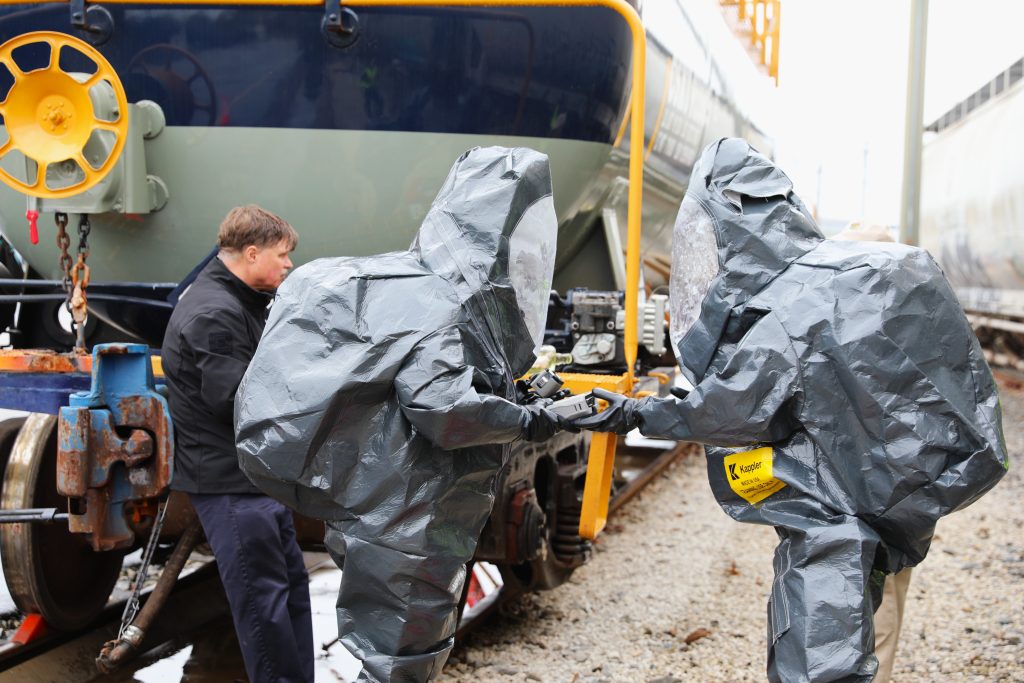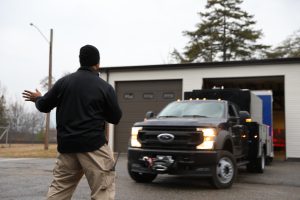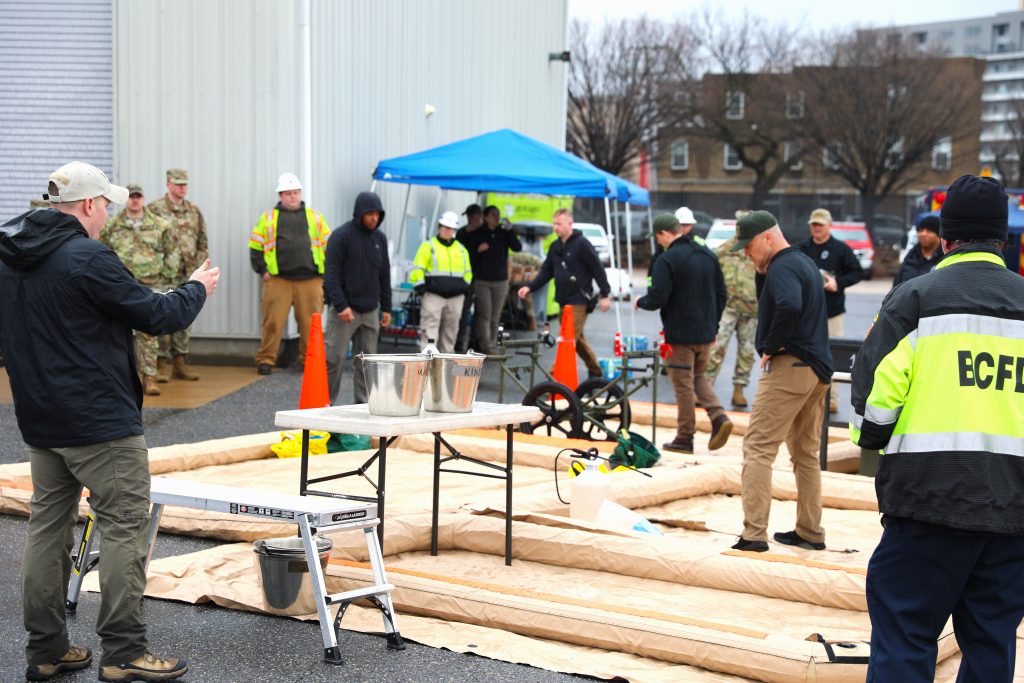32nd Civil Support Team conducts joint exercise with civilian partners
By 1st Lt. Javier Cox
29th MPAD

BALTIMORE – Beginning in the early morning hours of February 28, 2024, the Maryland National Guard’s 32nd Civil Support Team met at their headquarters located on Ft. George G. Meade. Their mission, according to Maryland Army National Guard Lt. Col. Brian K. Zdunowski, 32nd CST commander, is to respond to a reported hazardous material at the CSX railyard in South Baltimore, identify the hazard, mitigate potential exposure, test the reported material, and assist civil authorities on ground.
As the Maryland Military Department’s primary response force in scenarios such as this, the 32nd CST is a unique type of unit within the United States armed forces. Formally known as a “Weapons of Mass Destruction Civil Support Team,” these units’ mission is to support civil authorities in the event of use, or threatened use, of any weapon capable of causing widespread death and destruction. CSTs are trained to detect and mitigate chemical, biological, radiological, nuclear and high-explosive substances and are federally funded National Guard units designed to address CBRNE attacks.

MAJ Greer, 32nd CST, ground guides the ADVON vehicle from the HQ in preparation to deploy to the exercise.
With the mission set, the team convoyed their critical vehicles and protective gears to the CSX rail yard near the I-95 tunnel in Baltimore along with the agencies that act as a similar response force to CBRNE incidents. All of the agencies report to the Office of Homeland Security and Emergency Management in this scenario. They are charged with directing resources of local police, fire, and other agencies in order to identify incidents, lessen the loss of life and reduce injuries and property damage during natural or man-made emergencies and disasters.
“Training the team is very important. As a commander, I like to get the team out to various locations and familiarize them with operating in different environments,” said Zdunowski, explaining the importance of training with other agencies. “I have been in command of the 32nd Civil Support Team for almost two years and we haven’t operated or trained in a railroad environment. We don’t want to meet our agency partners (for the first time) during a real-world emergency. We want to meet and work with them before an emergency happens.”

32nd CST discuss future joint operations with their Air Force counterparts from the 175th Wing
Partnering for the first time in over a decade with Baltimore City and Baltimore County Fire Departments’ Hazmat Teams, the 32nd CST arrived on ground in Baltimore with the local branch of CSX Hazmat, which hosted the exercise at their rail yard.
“[These exercises] need to happen on a regular basis,” said Baltimore City Fire Department Capt. Aaron R. Carter, part of the command for the Hazmat Team. “The more we train with these teams, the better off we’re going to be as far as the integrity of the team.”
Carter, who directly supported the incident commander, also expressed the need for preparation and collaboration among all available agencies and organizations to better tackle future emergencies.
“It’s not a matter of if, it’s a matter of when an emergency is going to happen,” said Carter. “So we have to be prepared.”

Members of the 32nd CST conduct their investigation for hazardous materials at the CSX training rail car.
The CSX Hazmat team, which is located out of the state of Maryland, utilized their responder incident training rail car for the exercise. They are able to simulate the various hazardous materials that could be transported by railways across the country.
“It’s important to work with our agency partners and organizations like CSX to make sure that they know who we are and we know who they are, so we can operate together to get on and off scene and protect as many lives and property as we can,” said Zdunowski.

####
